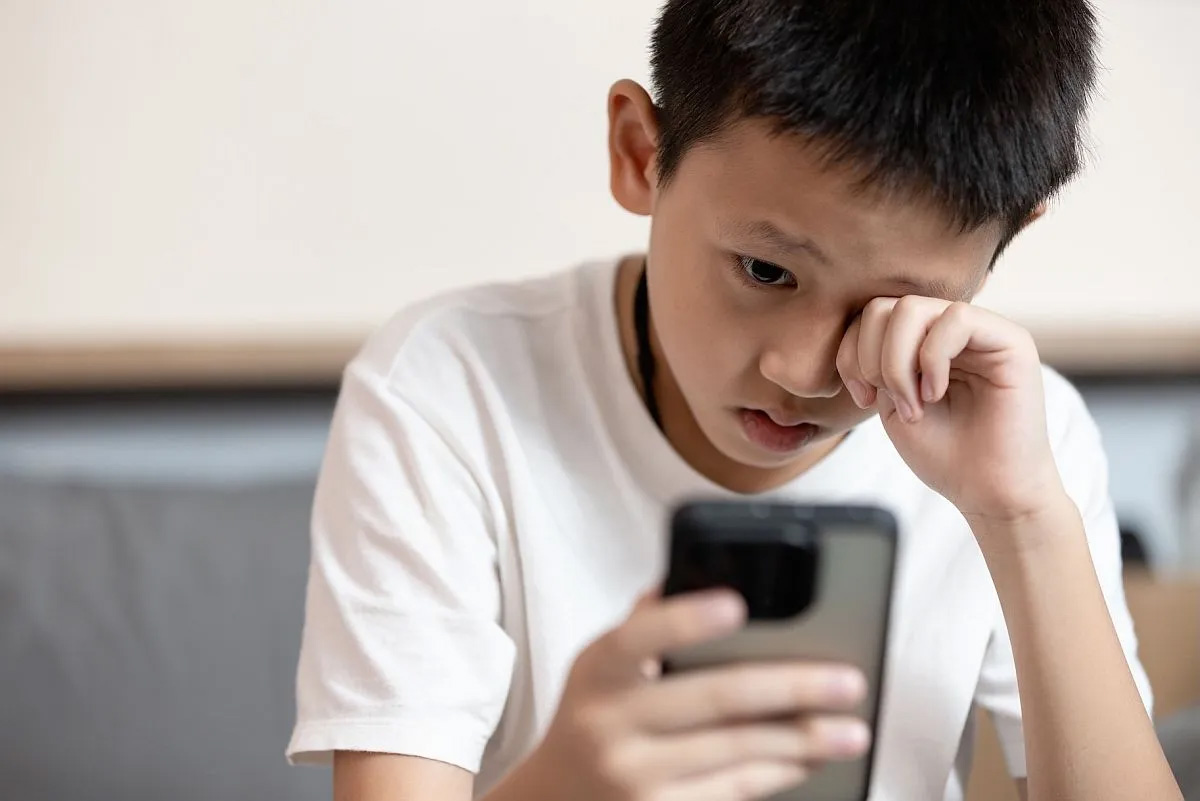From Playgrounds To Tablets: How Digital Life Is Impacting Children’s Eyes

KUALA LUMPUR, August 18 – Vision problems are becoming increasingly common among Malaysian children, yet many remain undiagnosed until they start affecting behaviour, school performance or overall development.
A recent study found that 22.3 per cent of Malaysian children have some form of visual impairment, with more than half of these cases linked to treatable causes.
Dr Fiona Chew, consultant ophthalmologist, paediatric ophthalmologist and strabismus surgeon at Sunway Medical Centre Velocity (SMCV), says most of these cases stem from refractive error, a condition where light is not focused properly on the eye due to the shape of the eyeball, resulting in blurry vision.
“Myopia (nearsightedness) and astigmatism (a common condition that causes distortion of vision) are the most common refractive errors in Malaysian children, and both are becoming increasingly prevalent,” she noted.
With August marking Children’s Eye Health and Safety Awareness Month, she reminds parents to prioritise regular vision checks, even when there are no obvious symptoms.
Understanding Refractive Errors In Children
Nearly one in two Malaysian children are affected by refractive errors, with a local study reporting a prevalence of 47.8 per cent. Myopia, affects 30.2 per cent, and occurs when light focuses in front of the retina, causing distant objects to appear blurry.
Astigmatism, which affects 16.3 per cent, is caused by an uneven curvature of the cornea, resulting in blurred vision at all distances.
While hyperopia, or long-sightedness, is less common at 1.2 per cent, and occurs when light focuses behind the retina, making near objects appear blurry.
While these conditions are common, Dr Chew shares that they are often overlooked because children rarely complain of vision problems.
Instead, they may adapt to their limitations, leading parents to believe nothing is wrong.
Symptoms may be subtle, such as squinting to see distant objects, frequent blinking or rubbing of the eyes, or even holding books and devices unusually close to the face.
She adds that while behaviours like sitting too close to the television are often mistaken for bad habits, it could indicate that a child is struggling to see clearly and may have myopia.
If left untreated, refractive errors can lead to more serious vision problems, including lazy eye which causes permanent poor vision, eye alignment issues, headaches from eye strain, problem with depth perception and even difficulties in concentration.
These risks are further compounded by modern lifestyle habits such as prolonged screen use, especially as reliance on digital devices has increased significantly over the years.
Impact Of Screen Time And Lifestyle Factors
Lifestyle changes in recent years have had a notable significant impact on children’s eye health, with the shift to remote learning during the pandemic, increasing daily screen exposure.
As a result, more than half of Malaysian students experience headaches linked to extended periods in front of screens.
Prolonged screen time is also associated with increased eyeball length, a key factor in the development of refractive errors.
In view of these risks, Dr Chew recommends that children over the age of 3 should have no more than one hour of screen time per day, while children under 3 should avoid screens entirely.
Ideally, screen time should be introduced as late as possible, preferably from the age of 7.
Spending more time outdoors can help protect children’s vision by giving their eyes a break from digital devices.
This also allows them to focus on varying distances while exposing them to natural sunlight. Research increasingly links outdoor activities to a reduced risk of developing myopia.
With that, Dr Chew also encourages the adoption of the 20-20-20 rule, which is beneficial for people of all ages.
“It is a simple yet effective habit I practise myself, where every 20 minutes of near distance work, I take a 20 second break to focus on something 20 feet away,” she said.
Treatment And Management Options
Alongside these preventive habits, appropriate corrective measures are key to protecting a child’s vision.
Prescription glasses remain the most effective way to correct refractive errors in children, and those who require them should wear their glasses consistently to prevent eye strain and help stabilise the refractive error.
Dr Chew adds that concerns that glasses will weaken a child’s eyesight are unfounded, as the correct prescription instead helps the eye to focus properly.
For older children from the age of 10 to 12, contact lenses may be introduced as an alternative, but strict hygiene must be practiced to avoid eye infections.
Routine eye screening also plays an important role in maintaining children’s eye health.
All children should be screened at birth, followed by a formal eye assessment at the age of three. Should there be any signs of vision problems in between, parents are encouraged to take proactive steps and have their children’s eyes assessed earlier.
“When detected early, many childhood eye conditions can be treated effectively, significantly improving the treatment outcome and their quality of life,” Dr Fiona explained, noting that long-term visual outcomes are also supported by proper nutrition, which is essential for healthy visual development.
The Role Of Nutrition In Eye Health
Nutrition is a critical yet often overlooked factor in protecting children’s vision. According to Chow Yu Fei, registered dietitian at SMCV, a balanced diet during early childhood supports optimal visual development, eye muscle coordination and overall eye function.
Key nutrients such as vitamin A, lutein, zeaxanthin and omega-3 fatty acids play an essential role in maintaining clear vision and protecting the retina from harmful light exposure.
Deficiencies during this stage may not only affect their vision now but also increases the risk of potential eye conditions in the future.
These nutrients can be found through everyday foods such as carrots, sweet potatoes, eggs, spinach, broccoli, corn, salmon, mackerel, local favourites such as ikan tenggiri, ikan kembung, ikan patin, walnuts and chia seeds.
Vitamin A deficiency can significantly impair a child’s ability to see in low-light conditions and, in severe cases, may cause permanent damage to the cornea. Insufficient lutein and zeaxanthin intake reduces the retina’s natural defence against harmful blue light, increasing its vulnerability to long-term damage.
While lack of omega-3 fatty acids can hinder the development and function of the retina, affecting the clarity and efficiency of visual processing.
By incorporating these nutrient-rich foods into daily meals, parents can give their children the best chance of developing strong, healthy vision that supports them throughout their lives.
Early detection, supported by healthy lifestyle habits and proper nutrition, can make a significant difference in preventing and managing vision problems in children.
By staying alert to subtle warning signs, scheduling regular screenings and encouraging good daily habits, parents can play a vital role in safeguarding their child’s eyesight.
With timely intervention and the right care, many childhood eye conditions can be treated successfully, giving children the best possible start for a lifetime of healthy vision.
这篇文章对您有帮助吗?
有0 位用户在 0 位中觉得这很有帮助。
Suggest to Read









